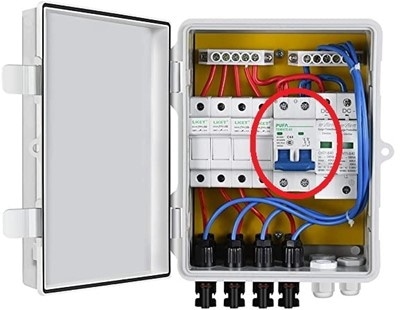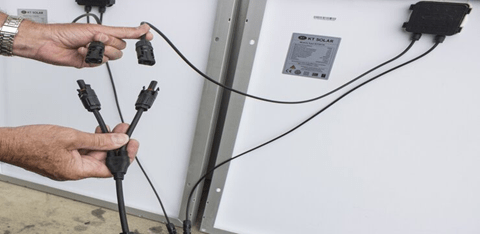Simple Guide to Safely Disconnecting Your Solar Panels
Page Contents
Written by qualified solar engineer Aniket. Last updated:
Solar panels should be disconnected by first turning the solar disconnects to the off position, both on the DC and AC sides. The wiring connections between panels should then be removed. There can be several reasons to disconnect a solar power system, the most common being for maintenance or repair purposes. Other reasons include moving to another place or, in some cases, to avoid electrical damage during upcoming severe weather conditions.
A good time to perform the system disconnect is when there is no bright sunlight. Unlike systems that use a controllable power source, solar power systems work on sunlight, which cannot be turned off, making it slightly more difficult to work on them safely. Read further to know how to safely disconnect solar panels.
Turning off Disconnect Switches/Circuit Breakers
The first step is turning off the disconnect switches or circuit breakers. Instead of remembering it that way, it is important to remember that the first step is to turn off any current flowing in the solar power system.
This helps avoid danger from electric current while working on the system. The direct current that the panels produce can be particularly dangerous, even at voltages below 100 V. Also, unlike the amps produced by a portable solar panel or two, a whole system might be producing a lot more, increasing the level of risk.
A system can have two types of circuit breakers or disconnects – one on the AC side and one on the DC side. Make sure to turn both off. The following is an image of DC and AC disconnect switches, which can be easily accessed to turn off.

Circuit breakers perform a similar function but can be fused. In most cases, modern solar systems will have disconnect switches. It is mandatory in many places to have them. Circuit breakers can also turn off the current flowing in a system; aka break the circuit, hence the name.
The following is an image of a combiner box with a circuit breaker (circled in red) for the DC side. Turning this off will prevent any current that the solar panels produce from entering the inverter.

The AC combiner box will have a similar breaker, which can be accessed by opening the cover. It can also be located on or beside the inverter. Although only turning off the DC side minimizes the risk, it is good practice to turn the circuit breakers on the side of alternating current too. Additionally, for systems with energy storage, the battery bank will still be connected to the inverter, sending current on the AC side.
The NEC Article 360 details the requirements for the rapid shutdown of a solar power system. It states that disconnect switches are mandatory on both the DC and AC sides and should be in the inverter’s line of sight.
There can be a single point rapid shutdown switch that can turn the whole system off within a second in many cases. This switch can even be located away from the system, such as inside the house. This is important for quick response in the event of a fire or any other disaster.
Disconnecting Solar Panels From Each Other
In most cases, disconnecting the DC and AC side using disconnects or circuit breakers should be sufficient for the maintenance level you are going to perform. However, in some cases, you will need to go one step further and disconnect the solar panels from one another. This may be a requirement when you need to dismantle the whole system, repair your roof, and install the system again.
As mentioned previously, solar panel energy production cannot be ‘turned off’, since when the sunlight strikes a solar cell, it will keep generating electricity. Although modern connectors have reduced the risk of an electrical shock, it is always good practice to make sure they are generating zero or near-zero power.
This can be done by covering the panels with an opaque surface. A dark, thick cloth serves this purpose well in most cases. It is okay if every solar cell is not covered, as long as most of the panel is covered. Once covered, you can make sure that the panels generate minimum or zero voltage by using a multimeter.

Thanks to easy MC4 connectors, power wires coming from the panels can be disconnected within seconds. Once removed, there is no current flowing among the solar panels. The next step, if applicable, is to remove the clamping nuts, bolts, and screws holding the solar modules on the mounting structures. Remove all of the clamping components carefully while holding the panels in place, then take them off one by one.
Disconnecting is even easier on a portable solar panel system with easy connections for solar and the electrical load. Especially, flexible solar panel kits will not require fiddling with clamping devices at all.
It is important to use insulating gloves while performing all the above operations, as solar safety is of the utmost importance. If possible, wear a hard hat and work shoes to minimize potential risks. Sloping roof solar systems can be harder to work on, and it is recommended to use a harness or, if possible, let professional technicians work on the system.
We hope you liked this article. Please rate it or leave us a comment.
Average rating 4.3 / 5. Vote count: 33
No votes so far! Be the first to rate this post.





